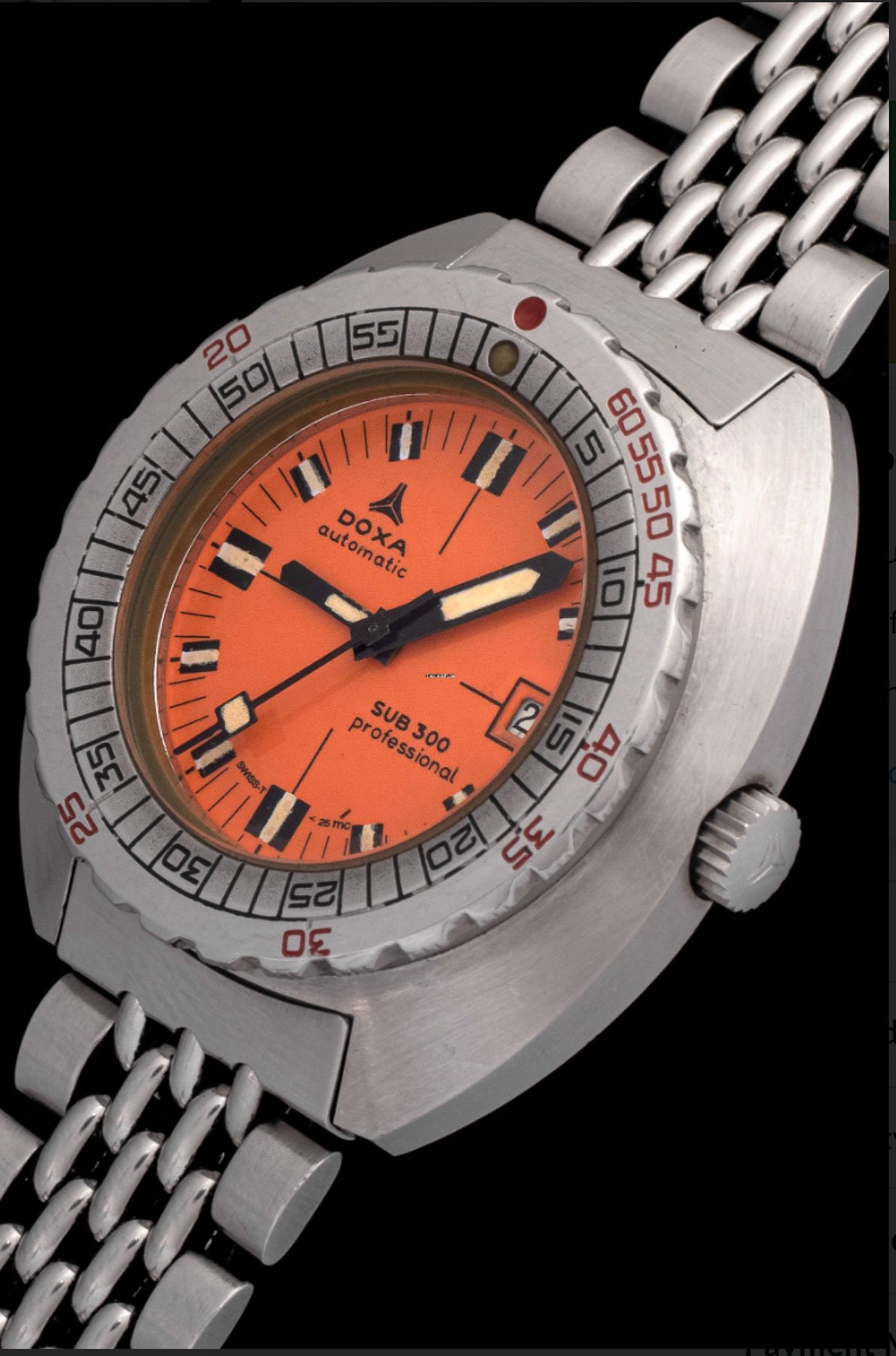Wrist Game or Crying Shame: Doxa SUB 300 Professional
Hey there Fools of April, it’s time for Wrist Game or Crying Shame — the weekly scientific study that measures whether you show non-clinical interest in a given time control unit. This week, we’ll turn our attention to a vintage Doxa SUB 300 Professional. But first…
Last week, we showed you the lovely 1990s Breitling Navitimer Montbrillant and a full 70% of you decided that this retro chronograph was worthy of a Wrist Game vote. I approve that message and my vote was cast accordingly. This week, we move away from a retro-styled watch to a retro watch that’s served as inspiration for plenty of re-editions. The watch is the legendary Doxa SUB 300 Professional. We’ve covered this watch ad nauseam here on Fratello, but I’ll give you a brief recap if you’ve been asleep.
Doxa SUB 300 Professional — Some History, But Not Much
Doxa was founded in 1889. Up until the birth of the Doxa SUB 300 Professional, the company was primarily focused on dress watches and chronographs. Interestingly, Doxa was a big name in Eastern Europe and it’s still common to find vintage pieces in these countries. In the 1960s, a light bulb went on at Doxa and the brand decided to hop on the burgeoning bandwagon of recreational diving.
Apparently, someone went diving into a lake within Le Locle, Switzerland and brought some oddly colored watches on the adventure. The idea was to check for visibility at depth and apparently orange won. This gave birth to the orange-dialed Professional.

The No-Deco Bezel
For a company that had been making “also-ran” dress watches, innovation continued past the addition of a hue with the Doxa SUB 300 Professional. The SUB added a US Navy no decompression bezel and while it looks like something that requires a night school degree to master, it’s pretty straightforward.
At 60 meters or 180 feet, for example, a whole 5 minutes is possible!
These bezels came in both metric (below) and imperial (above) units and allow the user to see how long it is possible to stay at a given depth without the need for decompression stops on the way up. At 60 meters or 180 feet, for example, a whole 5 minutes is possible!
The Emperor Loses Some Clothing
When the Doxa SUB 300 Professional was first released in 1967, it had a screw-down crown. The first year boasted a uniquely styled case that makes collectors swoon. Along with the Professional, Doxa also released a silver Searambler and black Sharkhunter (our header photo). In 1968, a thicker more traditional c-cased version took over but kept the same basic looks.
Around 1969, though, things changed and not for the better.
Here’s where things get interesting. The fat-cased 1968 version still had a proper diving crown. Around 1969, though, things changed and not for the better. The SUBs looked the same but a push/pull crown stepped in.
Still Considered Iconic
Cost-cutting and the sale of the brand to conglomerate Synchron likely caused the use of a more pedestrian crown. To me, it’s always seemed a shame. It has not, however, tarnished the watch’s reputation. The Doxa SUB 300 Professional is an icon amongst dive watch fans. It was used by Jacques Cousteau, which also lends it some credibility. This, despite the fact that Jacques seemed to go through watches, like most of us seem to go through toilet paper. It’s also cool looking and so un-sexy that it has charm. Yes, the SUB was made for a job and not to accompany you to your office job.
Vintage Models are Often a Mess
Watches like the Doxa SUB 300 Professional have gained in stature over the last several years. The brand helped this along with some thoughtful reissues and us journalists have done our part as well. These watches were previously dirt cheap with decent examples running in the $1,500 range. Those days are long gone, but the Synchron-era pieces are still approachable when compared to Submariners and the like.

The other thing about a vintage Doxa is condition and originality. These pieces were used and often abused. I like that but stuffed shirt collectors looking for window display pieces should look elsewhere. Re-lumed hands, dented cases, replacement crowns, and switched dials are all par for the course. Let’s also recall the fact that the brand didn’t exactly seem flush with cash at this point. Therefore, consistency in parts usage seemed a bit liberal.
Today’s Contestant
I’ve found what seems to be a decent Doxa SUB 300 Professional on Chrono24 by way of Milan, Italy. And while you might not want to travel there right now to pick up a watch, I’m sure that the good folks at Vintage Watches Milano would happily send it. For now, they’ve lent us some pictures of this Synchron-era example. Things look pretty good here with one caveat, but we’ll come to that.
The watch has what looks to be a clean dial and adds an original crown. The bezel looks nice, the mineral glass crystal fairly clear, and, most importantly, it comes on its iconic Expandro beads of rice bracelet. These bracelets have risen in value and are definitely worth your while. Just be cautious as they are delicate.
What’s odd here is that the dial lacks the “T” next to the Doxa SUB 300 name. 1967 models are the only editions without the letter, but today’s variant clearly has the later Synchron logo at 10:00. Perhaps the logo was added to an earlier dial or it’s just a variant. Hijinks may be at work, but I doubt it. The watch comes in at €3,500 and that seems to be about right. Again, the bracelet is a nice addition. Now let’s see if you’re a fan of these interesting divers or if you’d choose to spend your money elsewhere.







